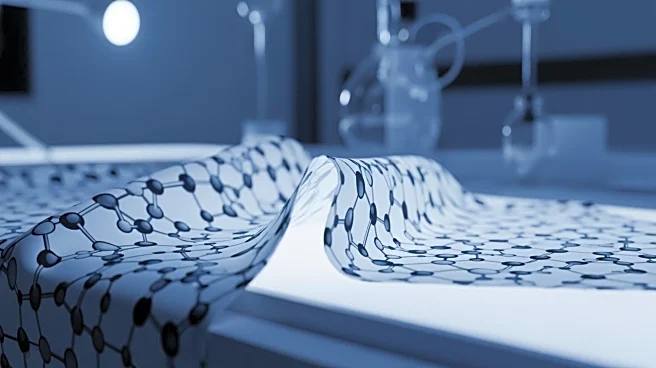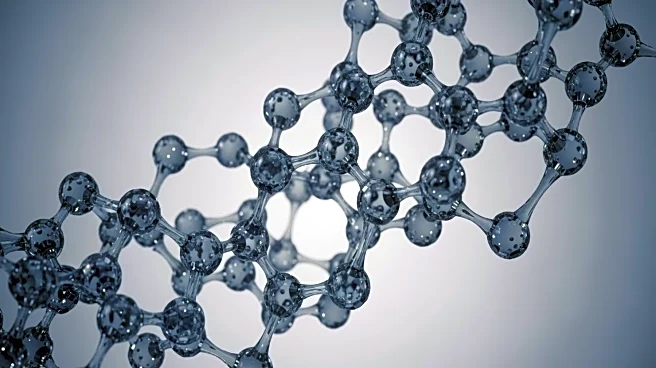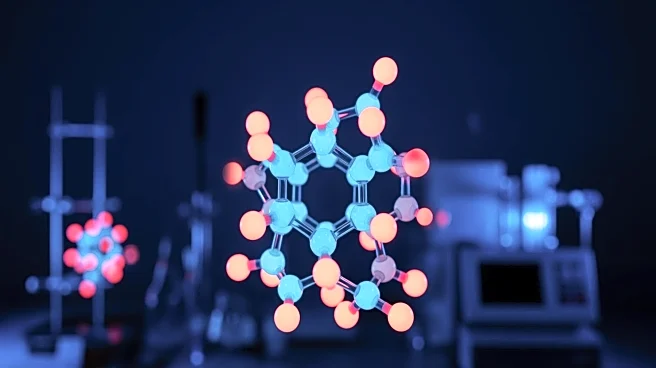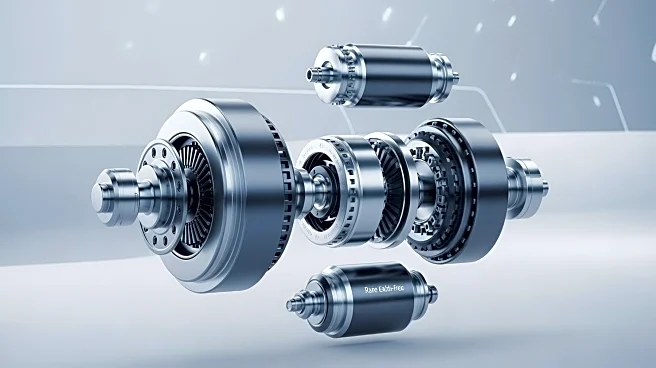What's Happening?
A recent study published in Nature has introduced a novel porous molecularly woven fabric, PWPN-1, designed for the dynamic separation of water isotopologues, specifically H2O and D2O. The fabric underwent
activation treatment to remove benzene molecules from its structure, resulting in a contraction along the c-axis and increased adaptability. The study demonstrated that PWPN-1a, the activated form, maintains stability while allowing adaptive movements in response to external stimuli. The fabric's porosity was confirmed through CO2 gas adsorption tests, revealing a specific surface area of 235 m2 g−1. Experiments showed that PWPN-1a has a higher equilibrium adsorption capacity for D2O compared to H2O, indicating its potential for effective separation. The study also explored the adsorption dynamics at various temperatures, confirming the fabric's capability for dynamic separation.
Why It's Important?
The development of PWPN-1a represents a significant advancement in materials science, particularly in the field of isotopologue separation. This technology could have substantial implications for industries that require precise separation processes, such as pharmaceuticals, chemical manufacturing, and environmental science. The ability to separate isotopologues efficiently can lead to more sustainable practices and cost-effective solutions in these sectors. Additionally, the adaptive stability of the fabric suggests potential applications in environments where materials are subjected to varying conditions, enhancing durability and performance.
What's Next?
Further research and development are likely to focus on scaling the production of PWPN-1a for industrial applications. Scientists may explore additional modifications to enhance its separation efficiency and adaptability. Industries interested in isotopologue separation might begin pilot projects to test the fabric's performance in real-world scenarios. Collaboration between research institutions and commercial entities could accelerate the integration of this technology into existing processes, potentially leading to new standards in material usage.
Beyond the Headlines
The introduction of PWPN-1a could trigger broader discussions on the ethical and environmental implications of advanced material technologies. As industries adopt new materials, considerations around sustainability, resource usage, and environmental impact become increasingly important. The study also highlights the potential for innovative materials to transform traditional practices, prompting a reevaluation of current methodologies and encouraging a shift towards more adaptive and efficient solutions.











